Contents
Introduction
The only substantial form of writing about cricket in the eighteenth century takes the form of poems and songs. After that there are numerous histories which help us to understand and appreciate the early history of the game. As time passes through these writings, the emphasis changes from memories and oral history towards study and research. The available resources are considerable and I do not pretend that this is in any way an exhaustive listing. It does however offer introduction as to what is available. Where possible I have included links to the texts themselves.
Poems and songs
These are the great poems of the period about and featuring cricket. Click on the heading to see the text.
About cricket
- 1706 – In Certamen Pilae (About a ball-game)
- 1740 – James Love – Cricket, An Heroic Poem
- 1773 – John Duncombe – Surry Triumphant or The Kentish Men’s Defeat
- 1773 – John Burnby – The Kentish Cricketers
- 1775- The Rev Mr Cotton of Winchester – Cricket – the club song of Hambledon
- 1790 – The Cryketeers – Ferdinando Fungus
Featuring cricket
- 1789 – Blake – The echoing Green
- 1806 – Byron – Childish Recollections (excerpt)
- 1828 – Wordsworth – Composed In the Valley near Dover
Later works about the period
- 1884 – Ballard of dead cricketers – Andrew Lang
- 1928 – The cricketers of Hambledon – Bruce Bunt, set to music by Peter Warlock
Nineteenth Century prose writings
Britcher’s Scores (1790 – 1805)

Samuel Britcher was the first MCC scorer and between 1790 and 1803 he gathered together scores which, together with an additional volume covering 1804/05, were published in 15 small books over that period. They were the first books of scores and are extraordinarily rare a total of only 52 copies (in total) being known to exist.
Rules and Instructions for Playing the Game of Cricket – T Boxall (1801)

Boxall was a noted bowler and is believed by some to be the first player to have bowled leg breaks. In 1790, Boxall published probably the earliest cricket instructional book, The Cricket Guide. In 1801, towards the end of his playing career, he published Rules and Instructions for Playing at the Game of Cricket, which reproduced his coaching material and added a section detailing the Laws of the game. Early editions of the book are extremely scarce and are prized by collectors of early cricket literature. I am afraid that am not able to provide a copy to view here, but much of the material was recycled in John Nyren’s The Young Cricketer’s Tutor, available on this website in EV Lucas’s The Hambledon Men.
The Cricketers’ Guide – William Lambert (1819)

Full title – The Cricketers’ Guide or a Concise Treatise on the Noble Game of Cricket as practiced by the most eminent players.
Scores – Henry Bentley (1823)

Full title – A Correct Account of All the Cricket matches which have been played by the Mary-le-bone Club, and All Other Principal matches, from the Year 1786 to 1822
Henry Bentley (1782-1857) enjoyed a long playing career principally for England, MCC, the Players and Middlesex, participating in grand matches from 1801 to 1822. Once his career as a professional bowler ended, he set out to provide the cricketing public with this book of scores and its two supplements before then turning to umpiring. Although the correctness of his Correct Account has been called into question, it was an important step in the tradition of dedicated score-keeping started by Britcher.
A Country Cricket Match – Mary Russell Mitford (1824)
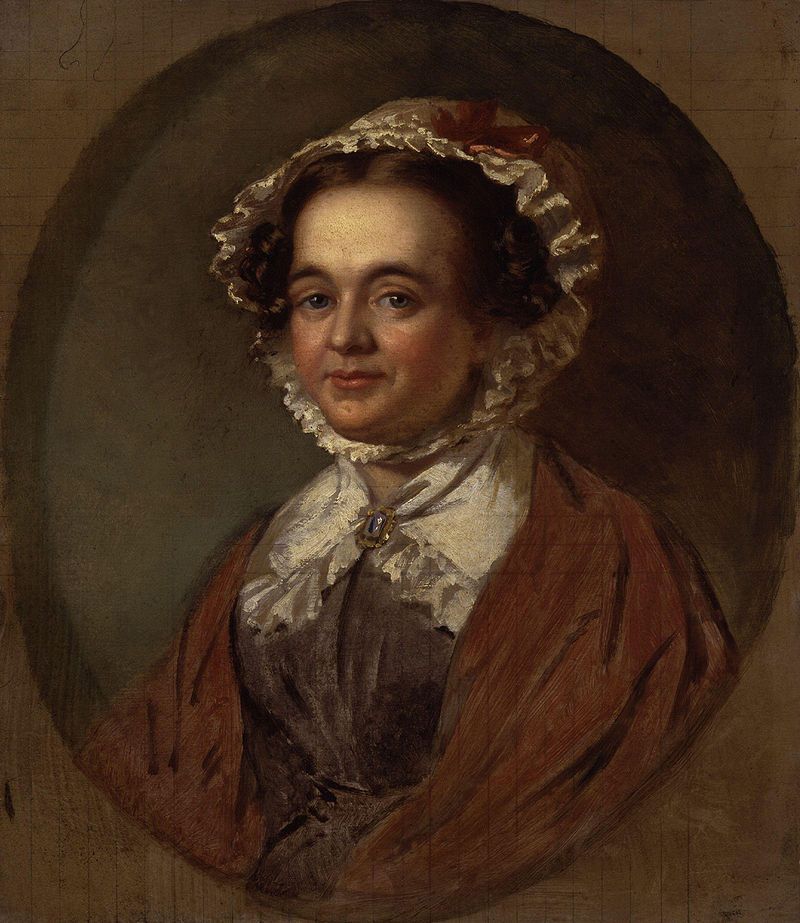
Mary Russell Mitford (16 December 1787 – 10 January 1855) was an English author and dramatist. She was born at Alresford in Hampshire. She is best known for Our Village (1824), a series of sketches of village scenes and vividly drawn characters based upon her life in Three Mile Cross near Reading in Berkshire. Her description of village cricket in this book has been called by EW Swanton “the first major prose on the game” (bear in mind, Nyren‘s work was not published until 1833).
The cricket chapter is reproduced here.
Lillywhite’s Cricket Scores and Biographies – Arthur Haygarth (1824)
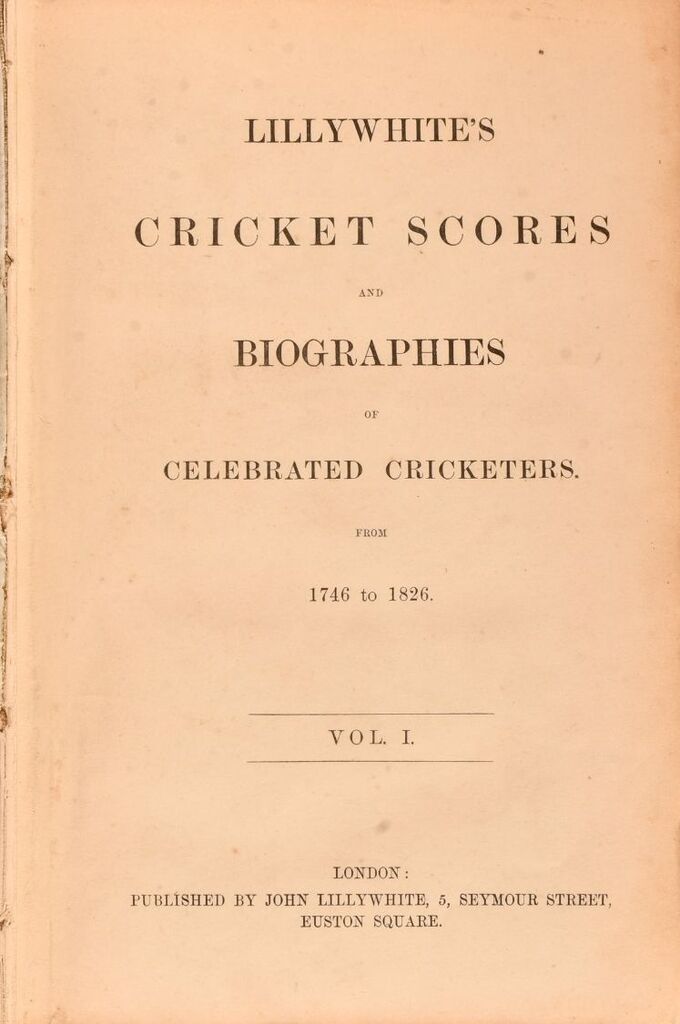
1824 – Complied and written by Arthur Haygarth, but more commonly known as Lillywhite’s, after the man who commissioned the series. This is the first of fifteen volumes which are the major source books about the early history of the game. It is safe to say, all English cricket historians use these books.
The first 14 volumes were published between 1862 and 1895, they covered the game in unbelievable detail from its beginnings until 1878. After that, Wisden, which started in 1864, takes over.
Volume one covers the period 1746 – 1826, so that is the one of relevance to this site. I purchased an inexpensive facsimile here.
The Hambledon Men – edited by E.V. Lucas (1833 (mostly), published 1907)

1907 – A anthology of the great writings from the nineteenth century, about the eighteenth. The most important of its contents are those also reproduced in John Arlott’s From Hambledon to Lords – The Classics of Cricket – a book given me for Christmas in 1975. Key texts are:
- 1833 – The Young Cricketer’s Tutor, – John Nyren (not in Arlott’s book)
- 1833 – The Cricketers of My Time, – John Nyren
- 1833 – Review of John Nyren’s Book, – Rev John Mitford
- 1882 – The Hambledon Club and the Old Players, – Rev James Pycroft (part only)
Nyren’s The Cricketers of My Time is the most important of any about the period, possibly about cricket ever. It is referred to throughout this site.
The book can be read in full here. The full version of Pycroft can be read here.
Echoes from Old Cricket Fields – Frederick Gale (1871)
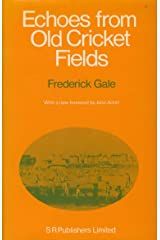
1871 – An early book of cricket history. A precursor to the next item.
One brief chapter of this book, John Bowyer Smokes a Pipe with me, can be found here. Well worth reading for the insight it gives into late Eighteenth Century cricket.
The Game of Cricket – Frederick Gale (1871)

1888 – Includes much about the early game.
Can be read in full here
The Sports and Pastimes of the People of England – Joseph Strutt (1831)

This book is an Encyclopedia of English recreation, first published in 1801 and revised twice thereafter. A key source on the origins of the game and links to other related games
This 1831 edition can be read here. Of relevance in particular is the chapter on handball etc, page 71 onwards.
Henry T Waghorn – Cricket Scores, Notes etc. 1730-1777 (1899)

Classic book of research into Early Cricket.
Waghorn also produced The Dawn of Cricket, in 1906, in which he traces all references to cricket up to 1800.
More recent prose writings
The Hambledon Cricket Chronicle – FS Ashley-Cooper (1923)
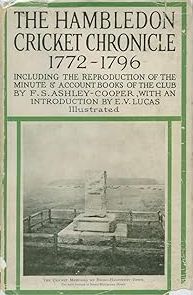
1923 – Detailed account of the Hambledon Club’s History
Early Cricket etc – PF Thomas (1920s)
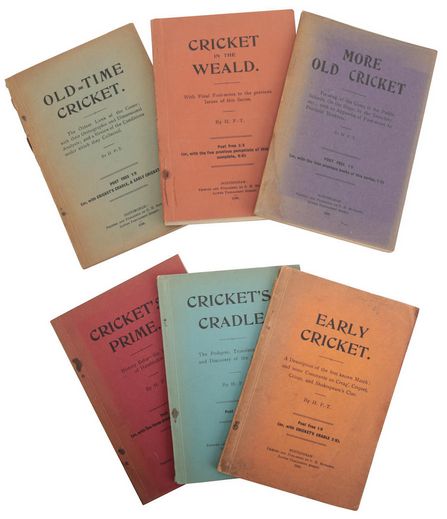
1920s. Six very long and influential pamphlets written by PF Thomas, they deal with particular issues concerning early in enormous details, while fail to cohere to provide a coherent view of the development of the game. If you want to spend a lot of time thinking about issues such as the origin of the word ‘cricket’, these writings are a good place to start. That is, if you can find them – they are very rare.
A History of Cricket – HS Altham and EW Swanton (1925)
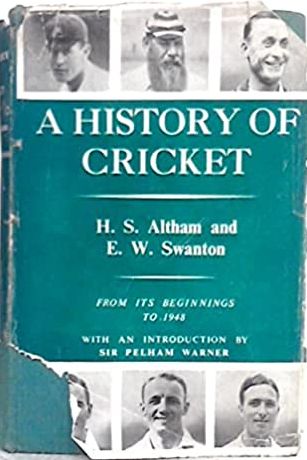
1925 – A classic general history with a decent section on early cricket.
Available here.
Fresh Light on 18th Century Cricket – George Buckley (1935)

Sub-title – A Collection of 1000 Cricket Notices from 1697 to 1800 AD Arranged in Chronological Order. A key reference book, as is its companion volume Fresh Light on Pre-Victorian Cricket: A Collection of New Cricket Notices from 1709 to 1837.
Bat, Ball, Wicket and all – GD Martineau (1950)

A charming little book, traces the development of cricket equipment back to its earliest days.
The Laws of Cricket – RS Rait Kerr (1950)
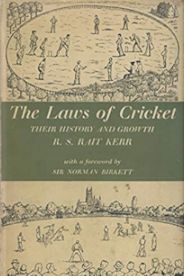
1950 – Definitive book about the development of the laws
The Story of Cricket – Vera Southgate (1964)

I would suggest that this is by far the most widely read source of information about early Cricket and the source of the most widely held myths about the game. it is a long way from being authoritative, but still encapsulates the joy if the game in a very special way.
I have devoted a full page to considering the the contents of the wonderful book insofar as it relates to early cricket. I think this is a good place to start exploring this site
Vera Southgate (1916 – 1995) was a educationalist who dedicated herself to improving how children were taught to read English. She wrote many Ladybird books.
Cricket – A history of its Growth and Development throughout the World – Rowland Bowen (1970)
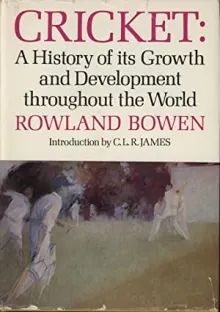
The book is one of the great books of cricket history. Bowen is incredibly well informed about world cricket and is on a mission to downplay the English involvement, hard though that may be. Strong on early cricket, this book should be reprinted. If you can get hold of a copy – do.
Rowland Bowen is an extraordinary figure, widely known for having chopped one of his own legs off – we now call this urge Body Integrity Identity Disorder (BIID). More about his life can be learned here.
Quilt Winders and Pod Shavers – Hugh Barty-John (1979)
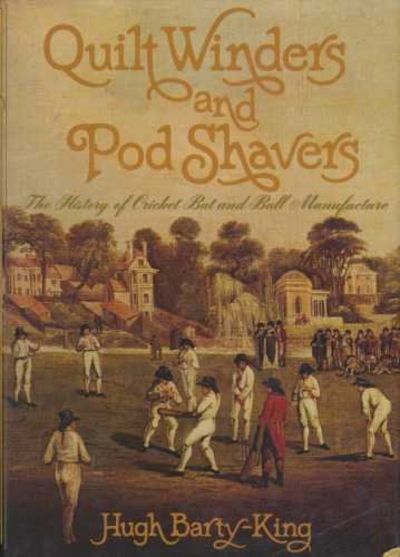
1979 – Great history of cricket equipment, good coverage of early cricket
Barclays World of Cricket – EW Swanton (editor) (1980)
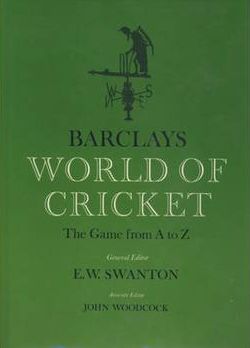
1980. The great Encyclopedia of Cricket, a very wide coverage.
The sections of early cricket history can be found here.
The Art of Cricket – Robin Simon and Alistair Smart (1983)
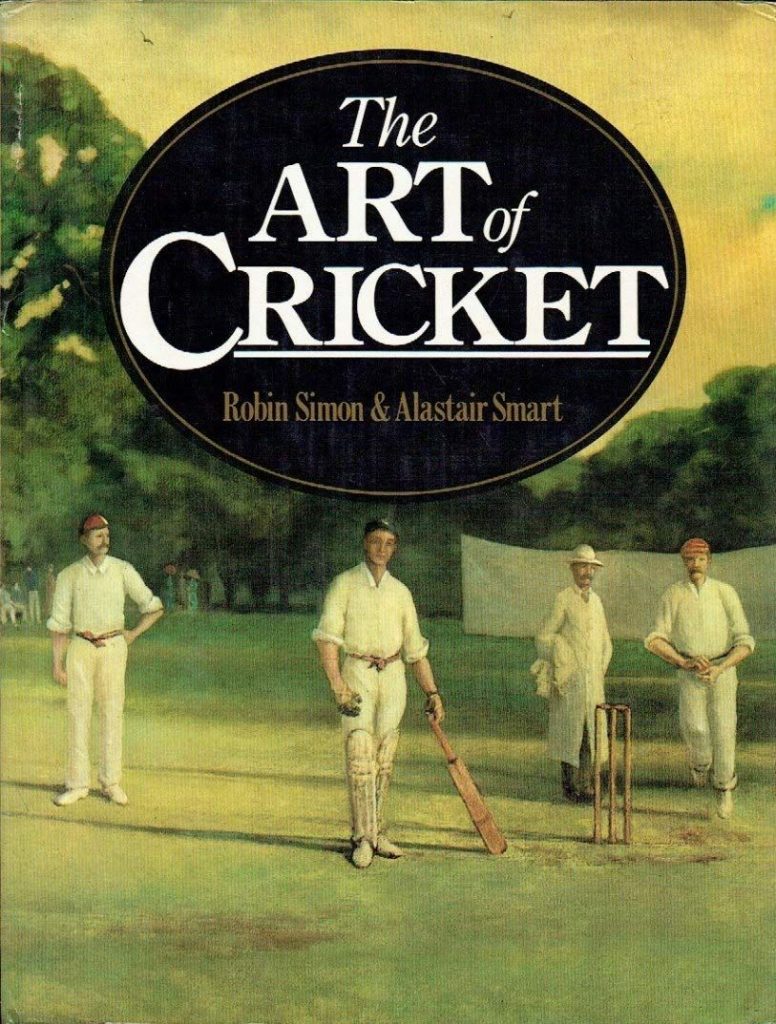
1983 – Fine book of cricket paintings, especially old cricket paintings. Not very well organised though.
A History of Cricket – Benny Green (1988)
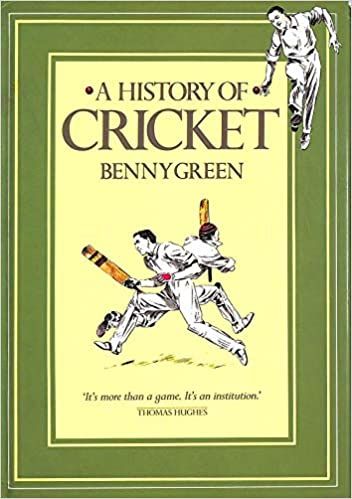
1988 – A general history with a decent section on early cricket. Benny Green is a very witty author, not known as cricket historian per sé, but his love of the game shines through.
The History of Cricket – Peter Wynne-Thomas (1997)
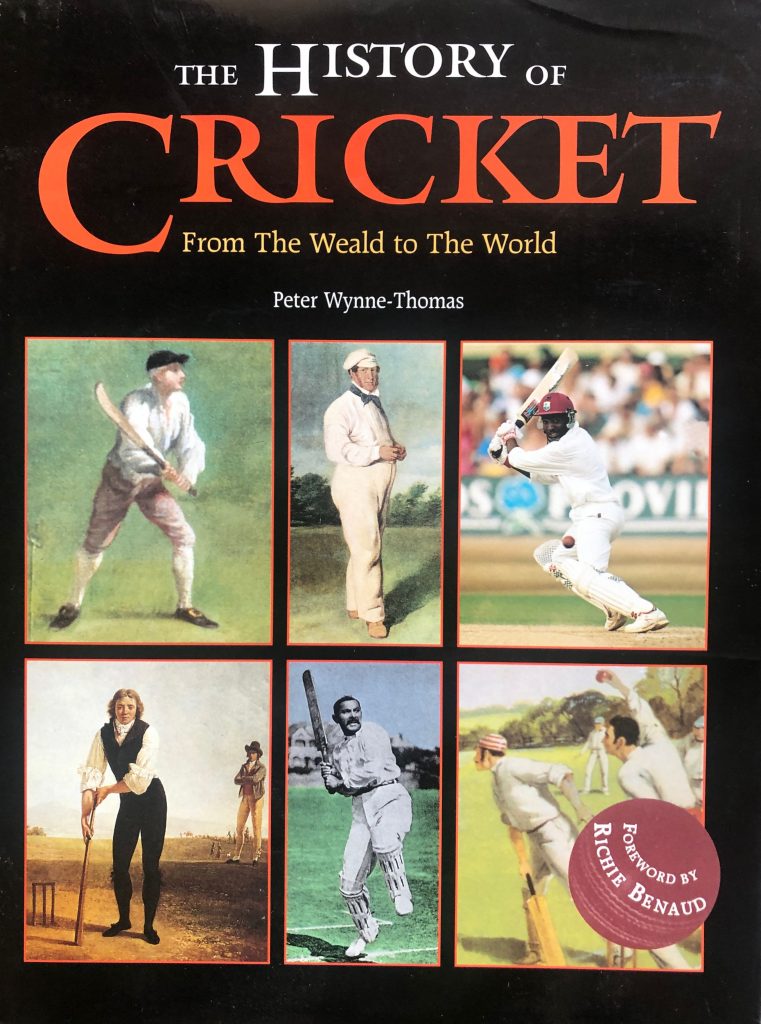
1997 – A general history with a good section on early cricket. Excellent maps and tables relating to early cricket. You will see a few on this site.
Peter Wynne-Thomas was one of the great cricket historians and was based at Trent Bridge, Nottingham. It is said that even when a great match was taking place he would rather be in the library that watching the cricket; make of that what you will.
Hambledon – The Biography of a Hampshire Village (1994)

Charming book, only partly about cricket. Well illustrated.
The Glory Days of Cricket – Ashley Mote (1997)
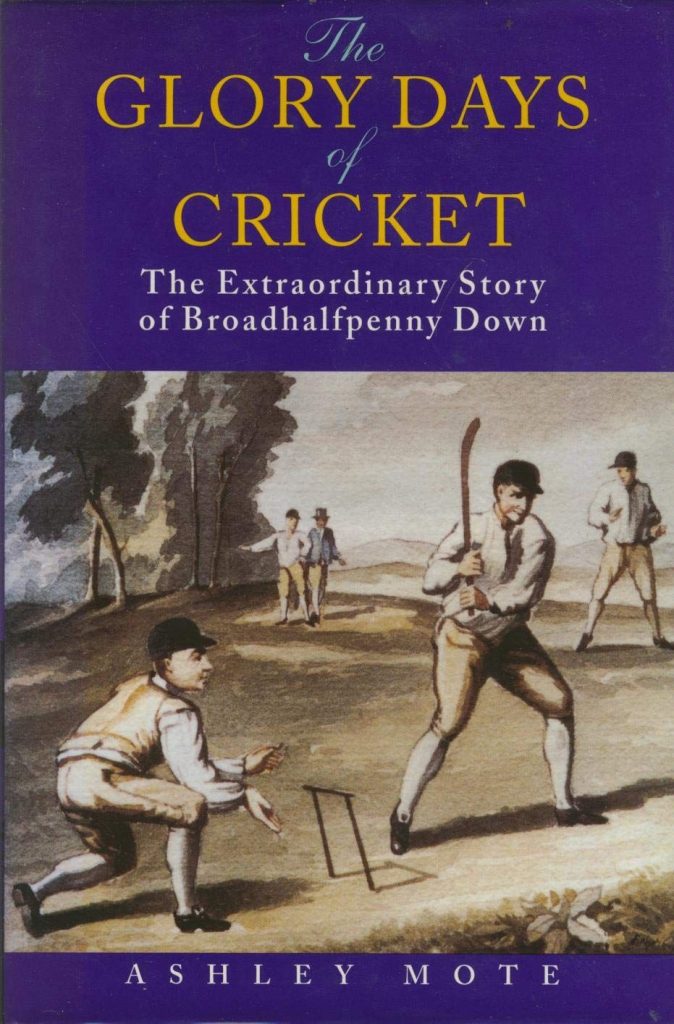
1997 – Impressive history of cricket at Broadhalfpenny Down, even if it plays fast and loose with facts on occasions. For instance, the first cricket building, The Lodge, he says was located at Broadhalfpenny Down; it wasn’t, it was at Windmill Down. And that is hardly a secret.
Ashley Mote though is a discredited character. A far-right politician who has the distinction of being disowned for dis-reputability by Nigel Farage, he was imprisoned for fraudulently claiming expenses from the European Parliament.
Derek Birley – A Social History of English Cricket (1999)
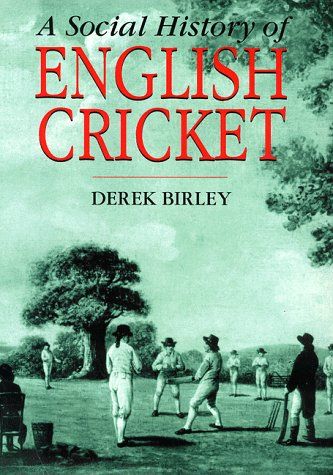
1999 – Birley is a brilliant writer, concentrating on social aspects of the game. Always skeptical of the cricketing establishment.
Start of Play – David Underdown (2000)
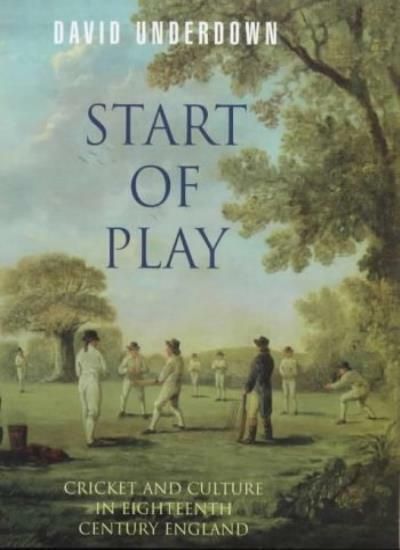
2000 – The one full length narrative history to concentrate of the early game. A lot of time is spent contextualising the subject with in terms of broader English history. A very worthy aim, but sometimes reads like a PhD thesis. Sometimes it reads like it could be about any old game which happened to become popular in eighteenth century England.
Here’s the Hambledon Club – Neil Jenkinson (2001)

A history of cricket in Hambledon, of which the early days are only a small part. It is still worthwhile though, contains valuable information about the neglected topic of Windmill Down.
Hambledon – The Men and the Myths (2001)
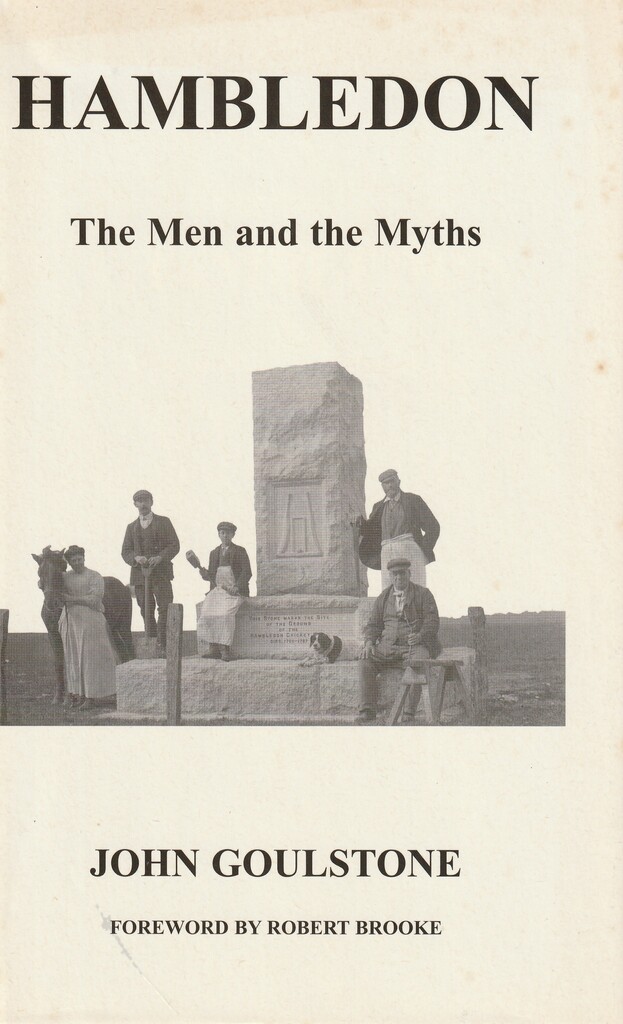
2001 – This book serves as a reply to The Glory Days. Goulstome takes Mote and other cricket writers to task for several inaccuracies. For instance he devotes a chapter to explaining why the cricketer involved in the large bat incident is not Shock White by Thomas White of Reigate. He is also particularly keen on family trees, they crop up throughout the book, doing not much more than listing out names of people who we nothing about, a bit like a telephone directory.
It is both the best and the worst of cricket history. The research is meticulous, but there is no colour, no judgement, to make the text readable.
More Than a Game – John Major (2007)
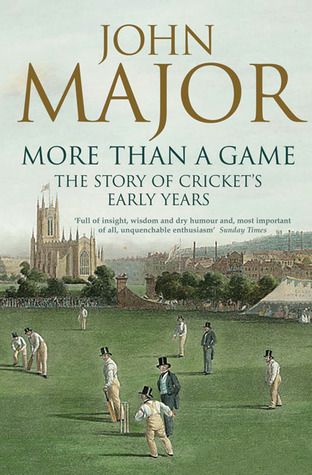
2007 – A very fine book, maybe winning best in show award, at least for a general history. John Major is of course, a former Prime Minister, one of a rare bred whose reputation grows with time. It must be said, he acknowledges considerable help in both researching and writing this book, but his tone of voice still shines through. Plenty of material about early cricket. If I can find a fault, it is a preoccupation with the Patrons or money-men of the game – but there again, Major is a Tory.
Nonetheless, if, as they say, you want just one book of cricket history, I think this is your best bet.
From Commons to Lord’s; A Chronology of Cricket 1700–1799 – Ian Maun (2009-2022)

The four large volumes of this masterful work which have been published so far take us to 1790. They set out in chronological order every single reference to cricket that can be traced in the Eighteenth Century. For example:

They are expensive and printed in limited editions, but are without equal in their value to someone who wants to get to grips with the detail of cricket in the period. Two more volumes will complete the series
Skirting the Boundary – A History of Women’s Cricket – Isabelle Duncan (2013)

A reasonable book about the Women’s game, but does tend to focus on famous matches and players when I, for one, would like to know more about the recreational game. That said, there are some excellent chapters including one on women’s cricket in the Eighteenth Century.
Cricket Archive

Internet resource – A wonderful source of information. If you want scorecards, averages, names – here they are. In a sense, this site is aimed at providing the view of early cricket that Cricket Archive misses out. On the other hand, Cricket Archive provides the information that this site does not. It lives behind a paywall.
